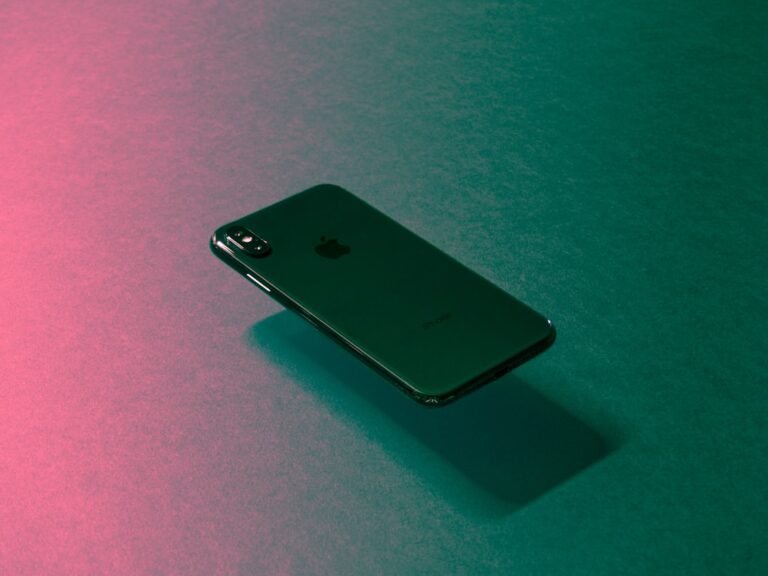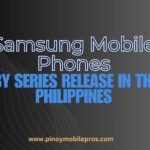A government phone, often referred to as a Lifeline phone, is a mobile device provided to eligible low-income individuals and families as part of a federal assistance program. The Lifeline program, established in 1985, aims to ensure that all Americans have access to essential communication services, particularly those who may struggle to afford them. These phones typically come with basic features and services, including voice calls, text messaging, and sometimes limited data plans.
The initiative recognizes the critical role that communication plays in accessing employment opportunities, healthcare, and social services. Government phones are usually offered at no cost or at a significantly reduced price, making them an invaluable resource for those in need. The devices can vary from basic models to smartphones, depending on the provider and the specific program.
In recent years, some providers have begun offering smartphones, including popular models like the iPhone, as part of their Lifeline services. This shift reflects the growing importance of mobile technology in everyday life and the need for low-income individuals to stay connected in an increasingly digital world.
Key Takeaways
- A government phone is a free or heavily subsidized mobile phone provided to low-income individuals by the government to ensure access to essential communication services.
- Eligibility for a free iPhone government phone typically includes participation in government assistance programs such as Medicaid, SNAP, or SSI, or meeting income requirements.
- To apply for a free iPhone government phone, individuals can typically do so online through the Lifeline program or directly through approved service providers.
- Benefits of having a government phone include access to emergency services, job opportunities, and staying connected with family and friends.
- Coverage and service providers for government phones vary by location, but major carriers like Verizon, AT&T, and T-Mobile often participate in the Lifeline program.
Eligibility for a Free iPhone Government Phone
To qualify for a free iPhone government phone, applicants must meet specific eligibility criteria set forth by the Lifeline program. Generally, eligibility is determined by income level or participation in certain federal assistance programs. For instance, individuals or households whose income is at or below 135% of the federal poverty guidelines may qualify.
These guidelines are updated annually and vary based on household size and location. For example, in 2023, a single-person household in the contiguous United States would need to have an income of less than approximately $18,000 to be eligible. In addition to income-based eligibility, participation in programs such as Medicaid, Supplemental Nutrition Assistance Program (SNAP), Supplemental Security Income (SSI), Federal Public Housing Assistance (FPHA), or Veterans Pension can also qualify individuals for a government phone.
Each state may have its own specific requirements and additional programs that can be considered for eligibility. Therefore, it is essential for applicants to check their local regulations and guidelines to ensure they meet the necessary criteria.
How to Apply for a Free iPhone Government Phone

Applying for a free iPhone government phone involves several steps that can vary slightly depending on the service provider. The first step is to determine eligibility by reviewing the criteria mentioned earlier. Once eligibility is confirmed, applicants can proceed with the application process.
Most providers offer online applications through their websites, which is often the most convenient method. Applicants will need to provide personal information such as their name, address, date of birth, and Social Security number. In addition to personal information, applicants must also submit documentation to verify their eligibility.
This may include proof of income, such as pay stubs or tax returns, or documentation showing participation in qualifying assistance programs. Some providers may allow applicants to upload these documents directly through their online application portal. After submitting the application and required documentation, applicants will typically receive a confirmation email or notification regarding the status of their application within a few days to a couple of weeks.
Source: FCC – Lifeline Program
Benefits of Having a Government Phone
| Benefits | Details |
|---|---|
| Access to Emergency Services | Government phones provide access to emergency services such as 911 for those in need. |
| Communication with Family and Friends | Individuals can stay connected with their loved ones through calls and messages. |
| Job Search and Employment Opportunities | Having a phone can help individuals search for job opportunities and stay in touch with potential employers. |
| Access to Healthcare Services | Government phones can be used to schedule medical appointments and communicate with healthcare providers. |
| Access to Government Services | Individuals can access government services and resources through their phones, such as applying for benefits or assistance programs. |
The benefits of having a government phone extend beyond mere access to communication; they encompass various aspects of daily life that can significantly improve an individual’s quality of life. One of the most immediate advantages is the ability to stay connected with family and friends. For many low-income individuals, maintaining social connections can be challenging due to financial constraints.
A government phone allows them to communicate without incurring high costs associated with traditional mobile plans. Moreover, government phones often come with features that facilitate access to essential services. For instance, many providers offer free or low-cost data plans that enable users to access the internet for job searches, online education, and telehealth services.
In an era where digital literacy is increasingly important, having a smartphone can empower individuals to seek employment opportunities and access vital resources that may otherwise be out of reach. Additionally, government phones can serve as a lifeline during emergencies, allowing users to call for help or stay informed about local safety alerts.
Coverage and Service Providers for Government Phones
Coverage for government phones varies depending on the service provider chosen by the applicant. Major telecommunications companies participate in the Lifeline program and offer government phones through various subsidiaries or brands. Some of the prominent providers include Assurance Wireless, Safelink Wireless, and Q Link Wireless.
Each provider has its own coverage map and service offerings, which can affect the quality of service experienced by users. For example, Assurance Wireless operates on the T-Mobile network and provides coverage in many urban and rural areas across the United States. Safelink Wireless utilizes Verizon’s network for its services, ensuring robust coverage in regions where Verizon has established infrastructure.
It is crucial for applicants to review coverage maps provided by these companies to ensure that they will have reliable service in their area before applying for a government phone.
Restrictions and Limitations of Government Phones
While government phones provide essential services to low-income individuals, they also come with certain restrictions and limitations that users should be aware of before applying. One significant limitation is that Lifeline service is only available for one phone per household. This means that if one member of a household already has a government phone, other members may not be eligible for another device under the Lifeline program.
Additionally, government phones often come with limited features compared to standard smartphones available on the market. While some providers offer smartphones like the iPhone, these devices may not have all the capabilities found in newer models sold at retail prices. Users may also face restrictions on data usage; many government phone plans include limited data allowances that can be quickly exhausted if not monitored closely.
Furthermore, international calling options may be restricted or unavailable altogether.
How to Upgrade a Government Phone
Upgrading a government phone can be a bit more complex than upgrading a standard mobile device due to the specific regulations governing Lifeline services. Generally speaking, users are not allowed to upgrade their devices until they have been enrolled in the program for a certain period—often around one year—unless there are extenuating circumstances such as device malfunction or loss. To initiate an upgrade process, users should first contact their service provider’s customer support team to inquire about eligibility and available options.
Some providers may offer discounted upgrades or allow users to purchase newer models at reduced prices after meeting specific criteria. It’s important for users to understand that upgrading may involve additional costs or changes in their service plan, so they should carefully review any new terms before proceeding.
Frequently Asked Questions about Government Phones
Many individuals have questions regarding government phones and the Lifeline program due to its complexity and varying state regulations. One common question is whether government phones can be used for international calls. Generally speaking, most government phone plans do not include international calling options; however, some providers may offer add-ons or special plans that allow limited international calls at an additional cost.
Another frequently asked question pertains to what happens if a user moves out of state after receiving a government phone. In such cases, it is essential for users to notify their service provider about their change of address as this may affect their eligibility based on local income guidelines or available services in their new location. Users should also inquire whether they need to reapply for Lifeline services in their new state.
Lastly, many people wonder about the privacy and security of using a government phone. While these devices are designed to provide essential communication services without compromising user privacy, it is still advisable for users to take standard precautions such as using strong passwords and being cautious about sharing personal information over unsecured networks.
If you are interested in finding the best smartphone for your needs, you should check out this article on smartphone finder. This article provides a comprehensive comparison of different mobile phones available in the market, including the latest models from Apple. It can help you make an informed decision when choosing a new phone, whether you are looking for a free iPhone government phone or any other type of smartphone.
FAQs
What is a free government phone?
A free government phone, also known as an Obama phone or Lifeline phone, is a mobile phone provided to low-income individuals by the government as part of the Lifeline Assistance program.
Who is eligible for a free government phone?
Eligibility for a free government phone is based on participation in certain government assistance programs such as Medicaid, SNAP (Supplemental Nutrition Assistance Program), SSI (Supplemental Security Income), Federal Public Housing Assistance, or Veterans Pension and Survivors Benefit.
How can I get a free government phone?
To get a free government phone, eligible individuals can apply through a participating phone company or through a state or federal social service agency. Applicants will need to provide proof of eligibility, such as a program participation letter or income documentation.
What kind of phone is provided for free?
The type of phone provided for free may vary by provider, but it is typically a basic smartphone with calling, texting, and data capabilities. Some providers may offer upgraded phones for an additional cost.
Is there a monthly limit on free government phone usage?
The Lifeline program provides eligible subscribers with a certain amount of free minutes and data each month. Once the monthly limit is reached, subscribers have the option to purchase additional minutes or data.
Can I keep my current phone number with a free government phone?
In most cases, eligible individuals can keep their current phone number when they switch to a free government phone. The process for transferring a phone number varies by provider and may require contacting the current phone company.










